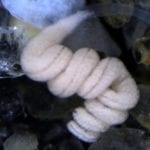 Creepy
Creepy  Creepy
Creepy  Technology
Technology 10 Scientific Breakthroughs of 2025 That’ll Change Everything
 Our World
Our World 10 Ways Icelandic Culture Makes Other Countries Look Boring
 Misconceptions
Misconceptions 10 Common Misconceptions About the Victorian Era
 Mysteries
Mysteries 10 Strange Unexplained Mysteries of 2025
 Miscellaneous
Miscellaneous 10 of History’s Most Bell-Ringing Finishing Moves
 History
History 10 Great Escapes That Ended Right Back in Captivity
 Weird Stuff
Weird Stuff 10 Fascinating Things You Might Not Know About Spiders
 Food
Food 10 Everyday Foods You Didn’t Know Were Invented by the U.S. Military
 History
History 10 Odd Things Colonial Americans Kept at Home
 Creepy
Creepy 10 More Representations of Death from Myth, Legend, and Folktale
 Technology
Technology 10 Scientific Breakthroughs of 2025 That’ll Change Everything
 Our World
Our World 10 Ways Icelandic Culture Makes Other Countries Look Boring
Who's Behind Listverse?

Jamie Frater
Head Editor
Jamie founded Listverse due to an insatiable desire to share fascinating, obscure, and bizarre facts. He has been a guest speaker on numerous national radio and television stations and is a five time published author.
More About Us Misconceptions
Misconceptions 10 Common Misconceptions About the Victorian Era
 Mysteries
Mysteries 10 Strange Unexplained Mysteries of 2025
 Miscellaneous
Miscellaneous 10 of History’s Most Bell-Ringing Finishing Moves
 History
History 10 Great Escapes That Ended Right Back in Captivity
 Weird Stuff
Weird Stuff 10 Fascinating Things You Might Not Know About Spiders
 Food
Food 10 Everyday Foods You Didn’t Know Were Invented by the U.S. Military
 History
History 10 Odd Things Colonial Americans Kept at Home
10 Freaky Facts Proving Frogs Are Fantastic
Behind the beady eyes and nighttime “ribbit” lurks a fascinating creature. Frogs and toads hop a weird line in life. They take buffalo taxis and use dating websites. Throughout human history, froggy feet have also left memorable prints, having inspired everything from famous novels to some of the earliest pregnancy kits.
Centuries of studies could not plumb the depths of these amphibians’ limits. They still manage to surprise scientists with their ability to survive bizarre injuries and mutations.
10 Visible Hearts
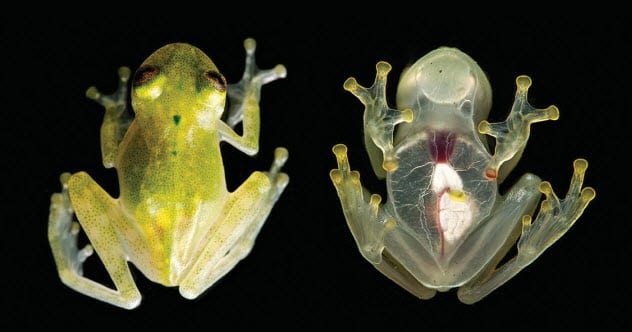
The Hyalinobatrachium genus of frogs has transparent bellies. The unusual look soon earned the tiny amphibians the title of “glass frogs.” Found in Central and South America, the see-through skin of two species extends over the chest and show their hearts.
In 2017, a third glass frog was found to beat its heart openly at the world. Called H. yaku, it was a bit odd. A visible heart is already a weird thing to find in nature, but H. yaku also looked different than other glass frogs.
All other species take some thinking and perhaps a magnifying glass to tell them apart. H. yaku turned up in Ecuador’s trees sporting unique green spots and distinctive songs. They also had bright green to yellow-green skin. Interestingly, DNA tests showed that this frog was not closely related to the other two species with visible hearts.[1]
9 Thousands Are Smuggled
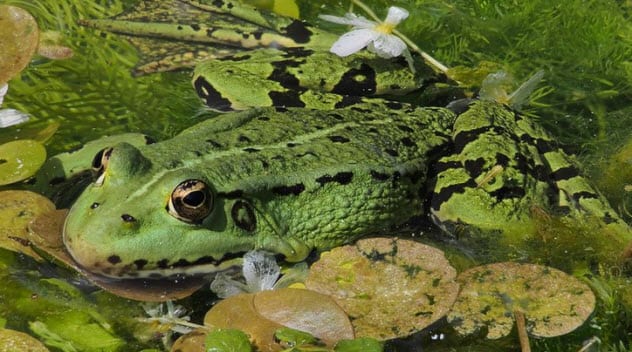
Frog legs are considered a French delicacy. Several other European countries also consume the amphibian limbs. To meet the demand, the animals are imported from other places like Turkey.
The latter ships a massive number of frogs to Europe but also tightly regulates the trade. To ensure that the frogs are not exploited, only certain people may collect them. Hunters must be in possession of the right license and can only collect certain species at specific times of the year. This is simply too much red tape for poachers, who often gather the creatures en masse before selling them to overseas buyers.[2]
In 2017, Turkish authorities caught five men attempting to do just that. When their minibus was stopped for a routine search, agents found about 7,500 common water frogs. The poachers confessed, and the kidnapped amphibians were released back into the wild.
8 The Match.com Frog
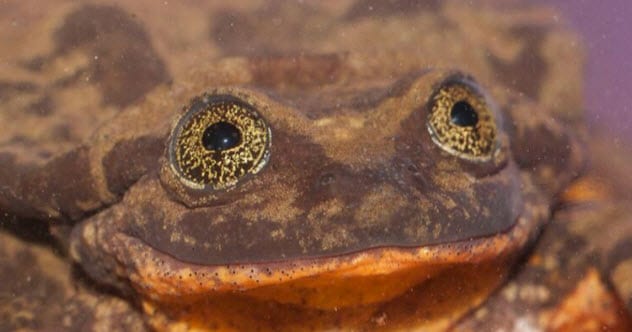
In Bolivia, one can visit the Museo de Historia Natural Alcide d’Orbigny. Inside this long-worded institute lives Romeo. This frog spends his days paddling around an enclosure and resting in the shadows. By species, he is a Sehuencas water frog, and by heart, very lonely.
After 10 years of croaking as romantically as he could, Romeo gave up in 2017. What his human caretakers already feared finally sank in—that he was the last-known frog of his kind. Even as Romeo’s calls fell silent, scientists continued their search for a mate.
In a creative move, they put Romeo’s profile on the online dating site Match.com. It raised enough funds to send researchers to the Bolivian cloud forest. In the past, it was full of Sehuencas water frogs. However, the usual suspects had decimated them—pollution, habitat destruction, and the deadly chytrid fungal infection.[3]
The 2019 expedition found five Sehuencas. Only two were female, but one was the perfect age for Romeo. Should the couple find no romance, their two-legged Cupids will try in vitro fertilization.
7 They Have Kneecaps
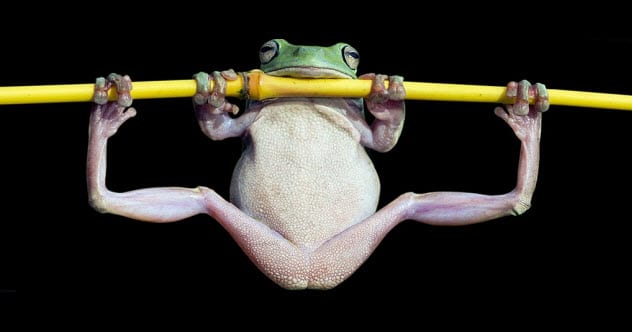
Frogs have been dissected and studied for centuries. Yet, one fact managed to elude scientists until 2017. As it turns out, the little hoppers have kneecaps. Weird ones, too.
It all began with the discovery of sesamoids. These bony structures are embedded in tendons over joints, essentially making them kneecaps. They turned up in species thought to have none, which inspired an Argentinian team to try their luck with frogs.
Incredibly, they found something. A close look at 20 frog species revealed a primitive cap, not yet a sesamoid. It was more of a cartilage blob, soft and small. So tiny, in fact, that it was hard to see under a microscope. Rather than protect the joints from a blow, the squishy pads might exist to alleviate the constant stress that frog knees are under.[4]
Although the primitive structures are not kneecaps in the modern sense, they suggest that the earliest caps did not evolve with the first tetrapods that crawled onto land. Instead, they came with amphibians.
6 Test Frogs Made Chytrid Global
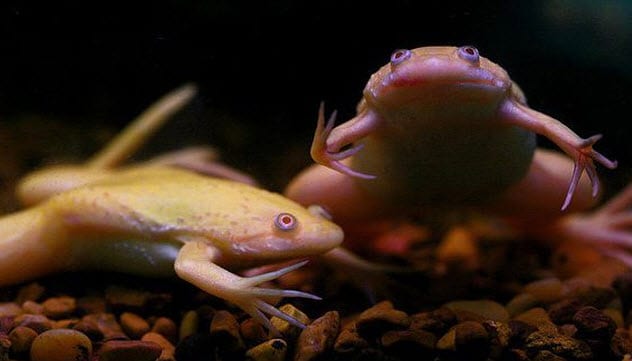
To date, the chytrid fungus has caused 200 amphibian species to become endangered or extinct. How it spread across the world was unclear, but recently, a candidate hopped to the fore—the African clawed frog.
During the 1930s, doctors injected urine samples into females. If the pee came from a pregnant woman, a pregnancy hormone (human chorionic gonadotropin) made the frog ovulate. By the following morning, the tank would be full of eggs. Since the method was successful and repeatable, the frogs were in high demand and shipped around the world.
The pregnancy stick women use today became available in 1988. The frogs were no longer needed, and many were released into the wild. The global spread of the species made it a good candidate for the devastating fungus, but confirmation came in 2006 when clawed frogs in California were found to have chytrid. Most were healthy, a strong clue that the species is the original carrier of the disease.[5]
5 Frog With No Lungs
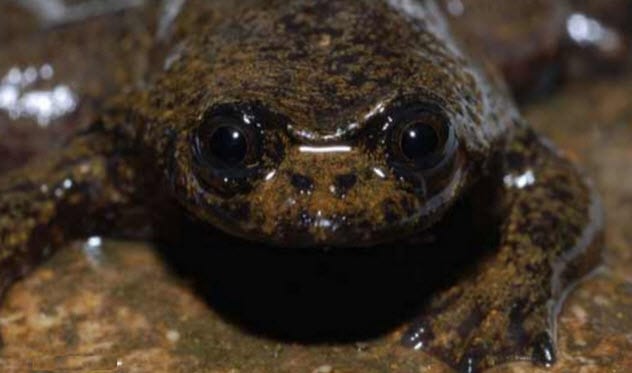
Around 30 years ago, scientists encountered a frog so rare that only two specimens were known. Due to the rarity, dissection was not an option. Had it been done, however, something exceptional would have come to light. The creatures, Barbourula kalimantanensis, had no lungs.
In 2008, researchers went to Borneo to find some more. Unfortunately, the tiny amphibians loved remote jungle areas and, worse, rivers that were rapid and freezing. One diver developed hypothermia. But despite the hiccup, several frogs were found.
Nobody had any idea of the bizarre anatomy until they cut a few open. The stomach, spleen, and liver occupied the space normally reserved for lungs. There was also a mysterious piece of cartilage. Best of all, the species consumed oxygen through its skin.[6]
Another bonus was how primitive they were. Researchers hope that the frogs can explain why lungs vanished from other ancient animals in the past and, each time, only in amphibians.
4 Buffalo Buffet
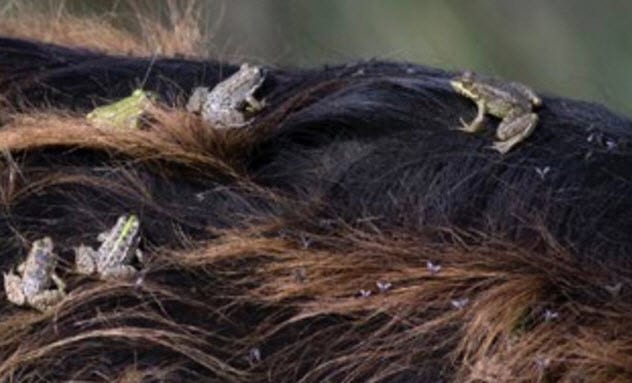
In northern Turkey, water buffalo roam the wetlands and pick up frogs as far as they go. Clever marsh frogs figured out that the hairy beasts attract flies. When buffalo come close, the amphibians clamber onto their backs and hunt down the insects. This also rids the buffalo of an irritating pest.[7]
Before the researchers found this peculiar cooperation between the two species, nobody believed that amphibians could manage a partnership with a large mammal. Then researchers visited the Kizilirmak Delta near the Black Sea in 2012. Within a week, they recorded 10 individual buffalo carrying teams of frogs, with each group numbering up to 27.
Just to make sure that it was not a one-time freak show, researchers returned the following year. The same thing happened. Since both times occurred in the fall when frog numbers boom, this behavior could be a novel answer to the season’s intense competition for food.
3 Eyes Inside Frog’s Mouth
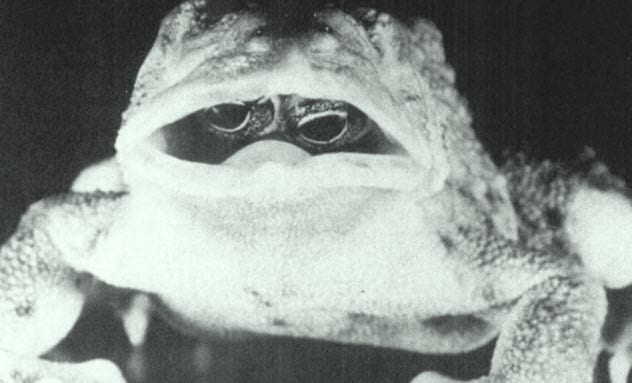
One day, two Canadian girls discovered a toad without eyes. However, a local journalist noticed that it seemed more aware of everything after its mouth opened. The reason sparked an enduring mystery. The animal had eyes, but they were attached to the roof of its mouth.
This was likely macromutation—a major change at birth and not something that evolved slowly over several generations. Although it takes small genetic changes to cause this phenomenon, the toad’s condition had never been seen before.[8]
One cause of macromutation is a parasitic infection. In particular, the trematode worm causes amphibian hosts to sprout extra, deformed, or missing back legs. This was probably not the case. The eyeballs were healthy and functional, just in the wrong place. Despite the weirdness, it was worlds away from worm-induced limb abnormalities.
2 They Inspired Frankenstein

During the 18th century, an Italian doctor named Luigi Galvani electrocuted frog legs. When they moved, everybody got excited. Electricity was a newly discovered force—and poorly understood. As the experiments appeared to restore life, it spawned the practice of galvanism, the quest to reanimate the dead with electricity.
It was one of Mary Shelley’s inspirations for her 1818 gothic novel, Frankenstein. Another famous writer of the time, Lord Byron, was a close friend. Shelley once told him, “Perhaps a corpse would be reanimated; galvanism had given token of such things: perhaps the component parts of a creature might be manufactured, brought together, and endued with vital warmth.”[9]
This was exactly what her main character, Dr. Frankenstein, did. Galvanism is now obsolete, but it helped to place a classic title on the shelves. All thanks to convulsing frog legs.
1 The Faceless Toad
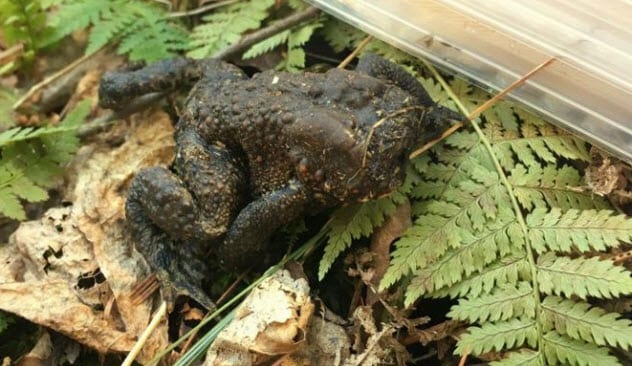
In 2018, researchers walked around a Connecticut forest. They were on a mission to gather information about newts. Instead, they bumped into a freaky toad. More accurately, the amphibian kept bumping into their feet and everything around it.
The creature could not see. Its entire face was missing. At first, it seemed like magic was afoot. The adult American toad was healthy, and the terrible wound was covered with old scar tissue.
How did it survive?
Sadly, researchers believe that it perished shortly after it was found. The frog was probably hibernating when it suffered an attack that removed its nose, eyes, jaw, and tongue. For some reason, the predator never killed the sleeping toad.
Left in peace and without the need to eat, the remaining hibernation period allowed the amphibian to heal. However, it woke up blind and incapable of foraging. Even if it managed to avoid predators, the toad was doomed to starve.[10]
For more freaky frog facts, check out 10 Frogs With Freakish Superpowers and Top 10 Bizarre Frogs.




